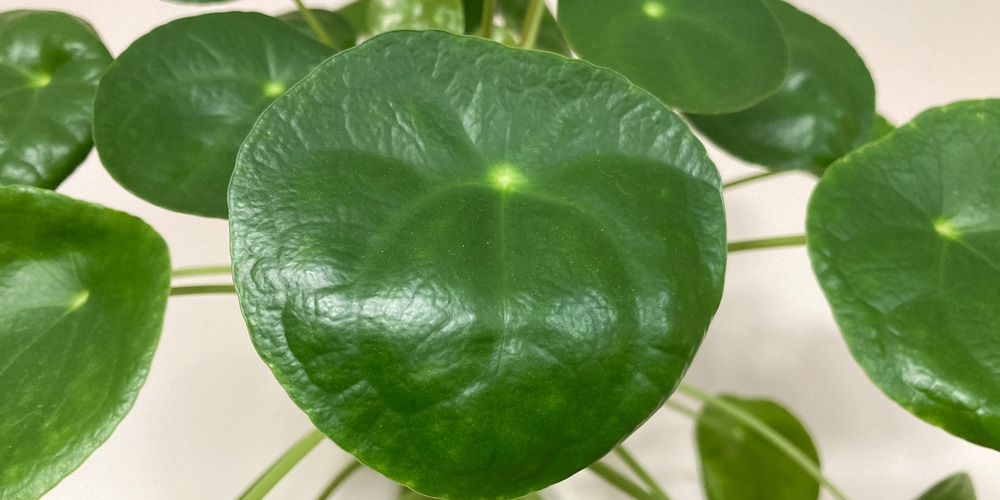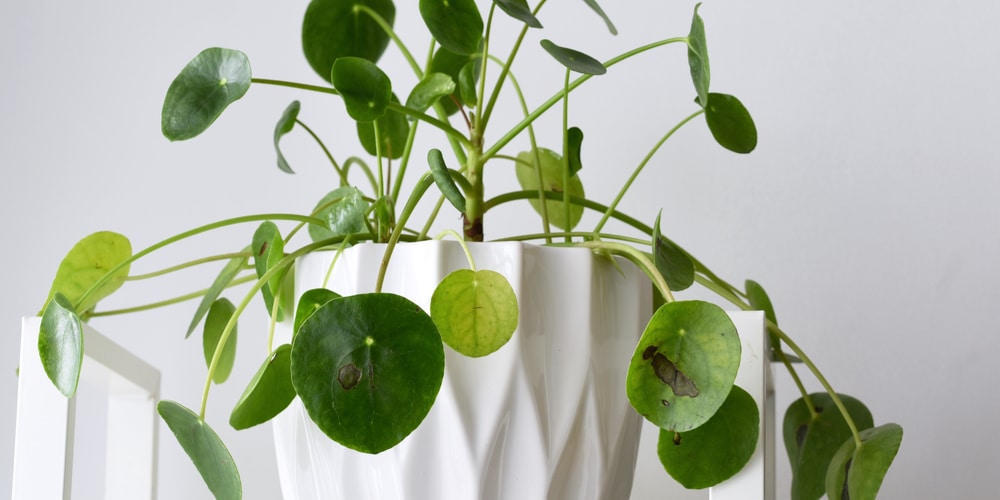The Chinese Money Plant is a popular houseplant that is considered by some to be good luck. The plants have lovely oval leaves, which are dark green and glossy. These plants make beautiful housewarming gifts. They are reasonably easy to look after but do have some specific care requirements. Chinese Money Plant leaves curling inwards can be caused by a number of factors, including light, water, or temperature.
Chinese money plant leaves curling inwards is a very common problem for this plant, and it can be challenging to determine what the problem is caused by. This article will help you determine why your Chinese money plant’s leaves are curling inwards and what to do to improve your plant’s health.
Chinese money plant leaves curling inwards: Common Problems
Inward leaf curling on a Chinese money plant is known as cupping and is generally caused by incorrect temperatures, underwatering, or a nutrient deficiency in the soil. If the plant is placed in a hot area, whether on a warm windowsill or outdoors in direct sun, its leaves may begin to cup. Drafts from an open window or the air conditioning system can also cause cupping. All Chinese money plants have curling leaves at some time in their life. Here are the most common reasons why.
1. Temperature Problems
Many people believe that Chinese money plants like warm climates when they actually prefer cooler areas. Leaving your plant in the hot sun will cause the leaves to curl inwards. Plants grown in the full sun or in a hot climate can also scorch, which could end up killing your plant.
When leaves curl inwards, it’s most likely to be due to hot temperatures, which cause water to evaporate from your plant’s pot. Chinese money plants thrive in temperatures of 55 to 65°F. They can cope if the temperature falls slightly to 45°F but don’t like hot weather.
When kept indoors, Chinese money plants are subject to extremes of temperatures. They may be affected by the central heating in winter and by breezes from fans or air conditioning in the summer. Temperature fluctuations can cause your plant’s leaves to curl.
2. Underwatering
Underwatering is the most common reason why a Chinese money plant leaves are curling inwards.
Underwatering can also cause the Chinese Money plant’s foliage to look curled. These plants respond to a drought by curling their leave to reduce the amount of water that’s lost through evaporation. This helps to preserve the plant’s health and stops the leaves from drying out.
To revive your plant and stop it from looking curled, ensure you develop a regular watering schedule. Water your plant before the soil completely dries out.
Inconsistent watering can also cause Chinese money plants’ leaves to curl. If your plant gets soaked and then left to dry out too much, it will try to conserve water or will absorb more than necessary. Inconsistent watering can also cause the leaves to split or become deformed.
3. Humidity
Low humidity is a very common reason why your Chinese Money plant’s leaves curl inward.
If the humidity is either too high or too low, your Chinese money plant may be affected. The plants prefer moderate humidity of between 40 and 50% but can survive if the humidity is as low as 20%. Low humidity levels can cause your plant’s leaves to start curling inwards, and they will also develop brown edges.
If your plant is growing in the correct temperature and is being watered properly, humidity may be the issue. However, it’s much more likely that water irregularity or incorrect temperature have caused your plant to suffer rather than humidity problems.
Conclusion
Most people who grow Chinese Money Plants find that their leaves will curl inwards at some point. This can be hard to deal with as there are many things that can cause leaves to curl. You should also be aware that when new leaves grow, they look curled, and as they mature, they uncurl. This is normal and isn’t caused by incorrect care of the plant.
If you focus on getting the temperature and watering right for your Chinese money plant, it will thrive. This plant is relatively adaptable, especially when it comes to humidity levels. Be careful not to rapidly change the temperature as this is most likely to affect your plant.
Similar article: Philodendron leaves are curling, why?

